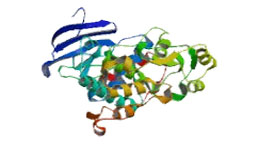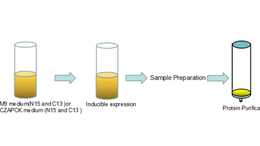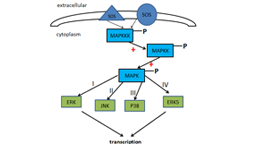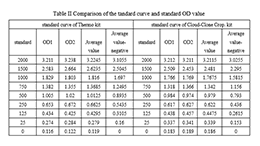-
Extracellular Signal-Regulated Protein Kinase 5(ERK5)—One Signal Pathway of MAPK

We had a brife introduction about the cascade activation signal pathway of MAPK in a early topic, including extracellular signal-regulated protein kinase(ERK), c-Jun N-terminal kinase(JNK), P38MAPK and ERK5. Among them, the pathways of JNK, P38MAPK and ERK5 belong to stress activated MAPK pathways. The discovery of ERK5 pathway is relatively late, but its research is very active.ERK5 includes 816 amino acids, and its length is almost 2 times of other members of the MAPK family. N-terminal of ERK5 has a domain of kinase, and C-terminal has a unique COOH, which is obviously different from the other members of the MAPK family. It is a three-dimensional structure of ERK5 shown in Figure 1.......
-
Preparation of N15 and C13 labeled recombinant protein

With thedevelopment of science and technology, protein structure and metabolism studybegan rapid development, especially in recent years. The NMR (Nuclear Magnetic Resonance)technology has been widely used in the field of protein structure,which becamesimple and feasible to analyze the structure of the protein. The NMR technologyof the basic principle for analyzing thestructure of the protein is that . the nuclear mass spectrometer issued aseries of electromagnetic wave, stimulating H, N and C atoms, the H, N, C atomsfrom the ground state transition into unstable excited state;when theelectromagnetic wave stopped, excited states of atoms will automatically returnto the ground state, an......
-
Glucosidase Alpha, Acid (GaA) - the Gold Standard for Diagnosing Pompe Disease
-----the-Gold-Standard-for-Diagnosing-Pompe-Disease.png)
GlucosidaseAlpha, Acid (GaA) is a kind of amylum hydrolase enzyme, which catalyzes thehydrolysis of polysaccharides to produce alpha D- glucose. In addition, it alsopossesses transglycosylation activity, which can transfer the alpha -1,4-glycosidic bond to alpha-1,6- glycosidic bond or other form linkages, to obtainnonfermented isomalto- oligosaccharide, glycolipids and glycopeptide etc.. The gene,which encode the GAA, is located at chromosome 17. Defects in this gene maylead to deficiency of GaA and glycogen accumulation in skeletal muscle, smoothmuscle & cardiac muscle tissue as the glycogen can’t be hydrolyzed by GaA. Then it may cause severeneuromuscular disease. This lysosomal s......
-
The Detection and Application of Complement C3 in Serum and Plamsa
Complements are mainly distributed inbody fluids and cell surface of human or animal. After activation, they couldmediate immune and inflammatory responses, they are also known as thecomplement system.Complement system consists of nearly 40kinds of ingredients, most of them are glycoproteins.There are 13 inherentcomponents, over 10 regulatory proteins, and more than 10 kinds of complementreceptors.Complementcan’t be saved in hot temperature,when it reaches 56 degrees, most of the complementswill lose the activity after 30 minutes. Complement is difficult to preserve,in freeze and dry environment, they can bestored in relatively long time.ComplementComponent 3(C3) is a core component.......
-
Cascade Ativation Signal Pathway of Mitogen-Activated Protein Kinases(MAPK)

Mitogen-activated protein kinases(Mark) is a group of serine - threonine protein kinase that can be activated byvarious extracellular stimulation, such as cytokines, neurotransmitters,hormone, cell stress and cell adhesion,etc. By stepwise phosphorylation,signalpathway of Mark as a important signal system could amplify and transmit thesignal, regulating the activity of transcription factor and expression of thecorresponding genes, and finally cause cellular response. Cascade activation ofMark is the center of a variety of signal pathways, involved in a variety oflife processes, such as, cell division, differentiation and apoptosis. And italso plays a key role in bone and joint inflamma......
-
Analysis of the BCA Protein Assay kit of Cloud-Clone Corp.

Currently,theworld’s most commonly used kit to detect the protein concentration is BCA protein assay kit and Bradford protein assay kit.And BCA method alwayswas knows as simple,stable and sensitive. Thecompatibility of protein concentration were determined by BCA method is alsovery good.It is not affected by most of other components in the sample.For lessthan 5% of SDS,Triton X-100,Tween 20,Tween 80, it has good compatibility.Thereis a good linear relationship in the 50~1000μg/ml concentrationrange,and the minimum detection limit was 25μg/ml. Certainly,Cloud-Clone Corp. alsodeveloped its own BCA Protein Assay Kit.Now, The Cloud-Clone Crop. kits werecompared with Thermo kit by stand......
